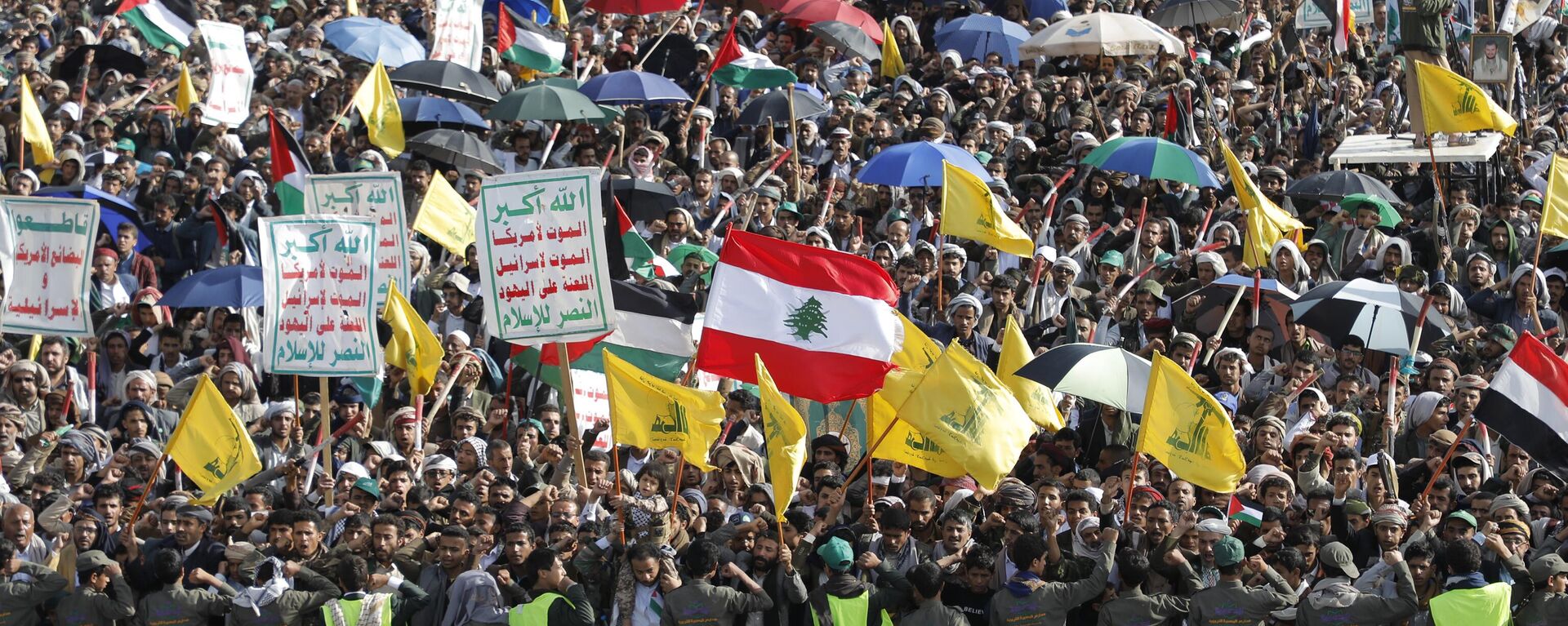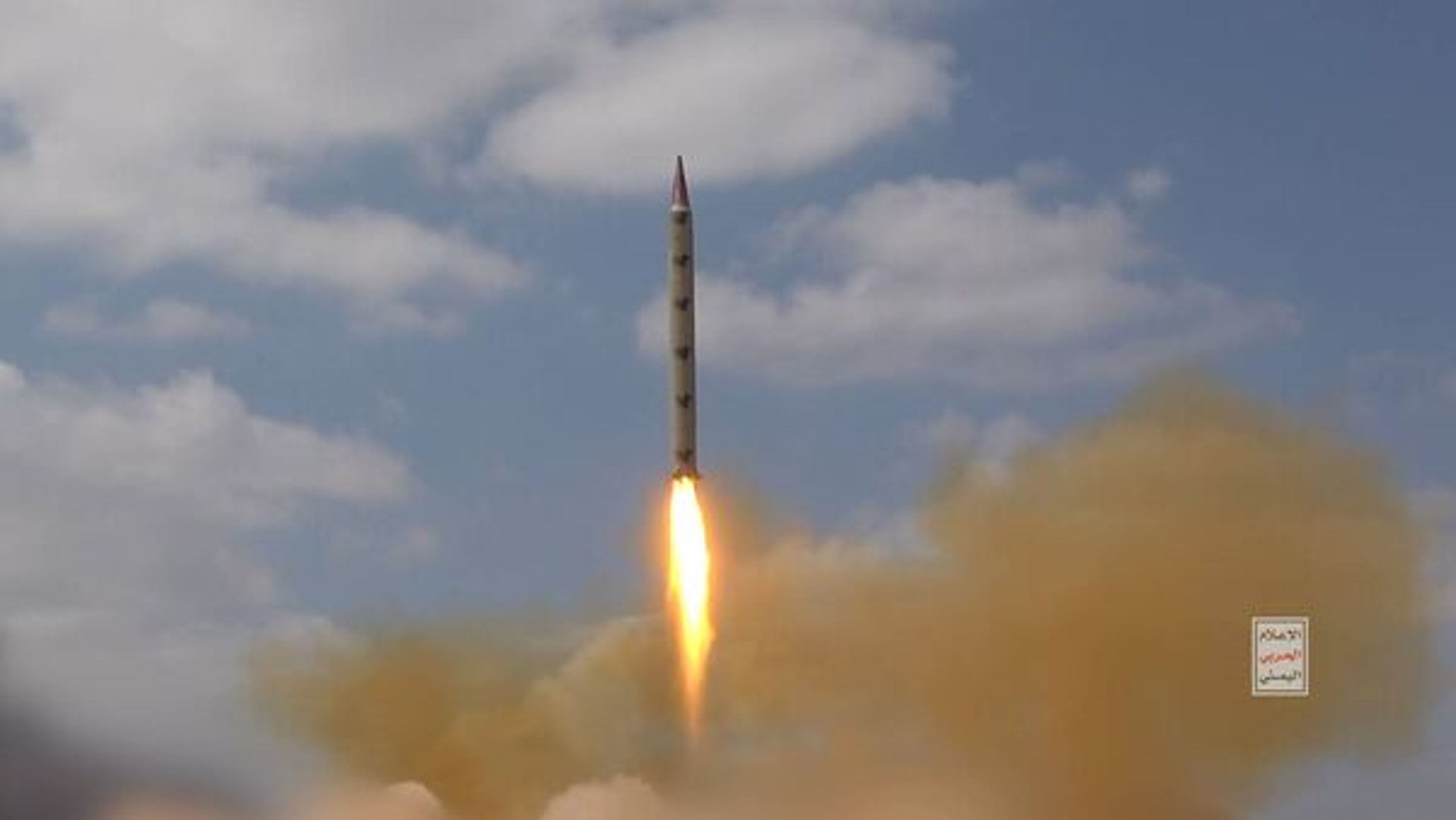https://sputnikglobe.com/20241008/what-we-know-about-the-houthi-missile-that-just-targeted-israel-1120469597.html
What We Know About the Houthi Missile That Just Targeted Israel
What We Know About the Houthi Missile That Just Targeted Israel
Sputnik International
Yemen’s Ansar Allah (Houthi) fighters fired two long-range missiles at military targets in Tel Aviv with the Houthi spokesman revealing one of the missiles involved was the Zulfiqar.
2024-10-08T11:29+0000
2024-10-08T11:29+0000
2024-10-08T13:00+0000
military
middle east
israel
yemen
houthi
houthis
arrow
https://cdn1.img.sputnikglobe.com/img/07e8/0a/08/1120470069_0:0:600:338_1920x0_80_0_0_6c6617056c5ba2d87d06091b53d4cbbd.png
Sirens sounded in central Israel three times throughout the day Monday amid missile, rocket, and drone attacks by Hamas, Hezbollah, and the Houthis amid the raging regional conflict. The Houthi missile attack prompted Tel Aviv’s Ben Gurion Airport to temporarily suspend all takeoffs and landings as a precautionary measure.Separately on Monday, the militia launched Jaffa and Samad 4 drones toward targets in Tel Aviv and Eilat.The Israeli military confirmed that a surface-to-surface missile launched from Yemen had been detected, and that it was successfully intercepted and destroyed before reaching Israel using the Arrow missile defense system. Israeli media said a fire erupted in Bet Shemesh, central Israel, purportedly caused by fragments of an interceptor fired to target the incoming Houthi projectile. Israeli officials and media did not mention the fate of the second missile the Houthis said they fired.Regional media have reported that Monday’s strike was the first time the Houthis fired the Zulfiqar (also spelled Zulfakar) at Israel, having previously deployed the missile against US-backed Gulf forces arrayed against them in the Yemeni civil war in 2021 and 2022. However, according to Israel’s UN mission, the Houthis began firing Zulfiqars at Israel as early as October 31, 2023.What Do We Know About the Zulfiqar?The Zulfiqar is a liquid-fueled medium-range ballistic missile with a reported range of over 2,000 km. A military source told Lebanon’s Al Mayadeen news outlet on Tuesday that the missile can maneuver, and has the capability to evade enemy air defenses and satellite-based detection systems.The Houthi Zulfiqar is not to be confused with the Iranian Zolfaghar – a road-mobile, single-stage, solid-fuel short-range ballistic missile derived from the widespread Fateh-110 series missile – which has a reported range of 700 km.According to Al Mayadeen’s source, the Zulfiqar is “Yemeni-made.” Defense observers are divided over the technology behind the Zulfiqar, with some suggesting the Zulfiqar may just be another name for the Houthis’ Burkan-3 (lit. "Volcano-3") liquid-fueled ballistic missile – reportedly based on the Iranian Qiam missile (although the Burkan-3 has a reported range of only 1,200 km, and the Qiam 700-800 km).Others think the Zulfiqar may be a deep modernization of the Soviet Scud-series of missiles, with the USSR known to have delivered the weapons to Yemen in large numbers during the Cold War, and the Houthis known to have seized stocks of Scud-Bs when they came to power in a popular revolution in 2014.The Houthis’ increasingly advanced capabilities have proven an unexpected headache for Israeli defenses along the southern flank, with an increasing number of militia projectiles proving able to penetrate Israel’s much-touted, multi-billion-dollar air and missile defense system. In July, a large, airplane-style Houthi drone buzzed into downtown Tel Aviv, slamming into a building 100 meters from a branch of the US Embassy in the city.In September, a Houthi Palestine-2 hypersonic missile slammed down in central Israel. The militia says that weapon has a 2,150 km range, is solid-fueled, fitted with “stealth technology,” and can fly at speeds of up to Mach 16.
https://sputnikglobe.com/20241006/america-is-partner-and-financier-of-israels-crimes--houthi-leader-1120447430.html
https://sputnikglobe.com/20241005/idf-admits-two-iranian-missiles-hit-israeli-air-bases-1120431834.html
israel
yemen
Sputnik International
feedback@sputniknews.com
+74956456601
MIA „Rossiya Segodnya“
2024
News
en_EN
Sputnik International
feedback@sputniknews.com
+74956456601
MIA „Rossiya Segodnya“
Sputnik International
feedback@sputniknews.com
+74956456601
MIA „Rossiya Segodnya“
what is zulfiqar missile, what missiles do houthis have, do houthis have advanced missiles, where do houthis get their missiles
what is zulfiqar missile, what missiles do houthis have, do houthis have advanced missiles, where do houthis get their missiles
What We Know About the Houthi Missile That Just Targeted Israel
11:29 GMT 08.10.2024 (Updated: 13:00 GMT 08.10.2024) Yemen’s Ansar Allah (Houthi) fighters fired two long-range missiles at military targets in Tel Aviv Monday on the one-year anniversary of the Israel-Hamas war. A Houthi spokesman revealed that one of the missiles involved was the Zulfiqar – named in honor of the mythical sword of Ali ibn Abi Talib, the first Shia imam. Here’s what we know about it.
Sirens sounded in central Israel three times throughout the day Monday amid missile, rocket, and drone attacks by Hamas, Hezbollah, and the Houthis amid the raging regional conflict. The Houthi missile attack prompted Tel Aviv’s Ben Gurion Airport to temporarily suspend all takeoffs and landings as a precautionary measure.
Houthi spokesman Yahya Saree said the missile strike was part of the militia’s ongoing operations in support of the Palestinian and Lebanese resistance, and said the “successful” attack targeted two military sites in the Tel Aviv area and involved the Palestine 2 and Zulfiqar missiles.
Separately on Monday, the militia launched Jaffa and Samad 4 drones toward targets in Tel Aviv and Eilat.
The Israeli military confirmed that a surface-to-surface missile launched from Yemen had been detected, and that it was successfully
intercepted and destroyed before reaching Israel using the Arrow missile defense system. Israeli media
said a fire erupted in Bet Shemesh, central Israel, purportedly caused by fragments of an interceptor fired to target the incoming Houthi projectile. Israeli officials and media did not mention the fate of the second missile the Houthis said they fired.
Regional media have
reported that Monday’s strike was the first time the Houthis fired the Zulfiqar (also spelled Zulfakar) at Israel, having previously deployed the missile against US-backed Gulf forces arrayed against them in the Yemeni civil war in
2021 and
2022. However, according to Israel’s UN mission, the Houthis
began firing Zulfiqars at Israel as early as October 31, 2023.

6 October 2024, 17:13 GMT
What Do We Know About the Zulfiqar?
The Zulfiqar is a liquid-fueled medium-range ballistic missile with a reported range of over
2,000 km. A military source
told Lebanon’s
Al Mayadeen news outlet on Tuesday that the missile
can maneuver, and has the capability to evade enemy air defenses and satellite-based detection systems.The Houthi Zulfiqar is not to be confused with the Iranian Zolfaghar – a road-mobile, single-stage, solid-fuel short-range ballistic missile derived from the widespread Fateh-110 series missile – which has a reported range of 700 km.
According to
Al Mayadeen’s source, the Zulfiqar is “Yemeni-made.” Defense observers are divided over the technology behind the Zulfiqar, with some
suggesting the Zulfiqar may just be another name for the Houthis’ Burkan-3 (lit. "Volcano-3") liquid-fueled ballistic missile – reportedly based on the Iranian Qiam missile (although the Burkan-3 has a reported range of only 1,200 km, and the Qiam 700-800 km).
Others
think the Zulfiqar may be a deep modernization of the Soviet Scud-series of missiles, with the USSR known to have delivered the weapons to Yemen in large numbers during the Cold War, and the Houthis known to have seized stocks of Scud-Bs when they came to power in a popular revolution in 2014.
However, the base Scud-series missiles are single-stage, liquid-fueled tactical fires with a range of only between 180 km-700 km. North Korea is known to have created variants of the Scud with a 1,000 km range known as the Rodong and Hwasong-9 (Scud-ER) in the 1990s and 2000s. Syria is known to have developed its own variant of the Scud called the Golan-1 and Golan-2, with these weapons having a range of 700-850 km. A Scud variant with a 2,000 km+ range is unheard of.
The Houthis’ increasingly advanced capabilities have proven an unexpected headache for Israeli defenses along the southern flank, with an increasing number of militia projectiles proving able to penetrate Israel’s much-touted, multi-billion-dollar air and missile defense system. In July, a large, airplane-style Houthi drone buzzed into downtown Tel Aviv, slamming into a building 100 meters from a branch of the US Embassy in the city.
In September, a Houthi Palestine-2 hypersonic missile slammed down in central Israel. The militia says that weapon has a 2,150 km range, is solid-fueled, fitted with “stealth technology,” and can fly at speeds of up to Mach 16.

5 October 2024, 17:48 GMT




